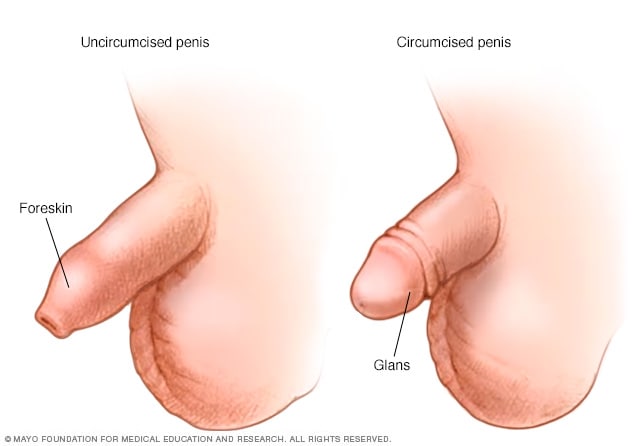 From Mayo Clinic President John H. Noseworthy, M.D. at mayoclinic.org:
From Mayo Clinic President John H. Noseworthy, M.D. at mayoclinic.org:
“Mission and values
Mayo Clinic’s mission is to inspire hope and contribute to health and well-being by providing the best care to every patient through integrated clinical practice, education and research. Our primary value is “The needs of the patient come first.”
Circumcision – Definition
Circumcision is the surgical removal of the skin covering the tip of the penis. Circumcision is fairly common for newborn boys in certain parts of the world, including the United States. Circumcision after the newborn period is possible, but it’s a more complex procedure.
For some families, circumcision is a religious ritual. Circumcision can also be a matter of family tradition, personal hygiene or preventive health care. For others, however, circumcision seems unnecessary or disfiguring. After circumcision, it isn’t generally possible to re-create the appearance of an uncircumcised penis.”
Mayo has failed it’s mission when it performs permanent genital mutilation on unconsenting infants as they satisfy the needs of parents and others AND NOT THE ACTUAL PATIENT.
More information:
Penis before and after circumcision
Before circumcision, the foreskin covers the tip of the penis (glans). After circumcision, the tip of the penis is exposed.
Using cartoonish illustrations and passive language such as this gloss over the brutal cutting and crushing involved in circumcision.
Under “Why it’s done:”
Circumcision is a religious or cultural ritual for many Jewish and Islamic families, as well as certain aboriginal tribes in Africa and Australia. Circumcision can also be a matter of family tradition, personal hygiene or preventive health care. Sometimes there’s a medical need for circumcision, such as when the foreskin is too tight to be pulled back (retracted) over the glans. In other cases, particularly in certain parts of Africa, circumcision is recommended for older boys or men to reduce the risk of certain sexually transmitted infections.
The American Academy of Pediatrics (AAP) says the benefits of circumcision outweigh the risks. However, the AAP doesn’t recommend routine circumcision for all male newborns. The AAP leaves the circumcision decision up to parents — and supports use of anesthetics for infants who have the procedure.
Circumcision might have various health benefits, including:
Easier hygiene. Circumcision makes it simpler to wash the penis. Washing beneath the foreskin of an uncircumcised penis is generally easy, however.
Decreased risk of urinary tract infections. The overall risk of urinary tract infections in males is low, but these infections are more common in uncircumcised males. Severe infections early in life can lead to kidney problems later on.
Decreased risk of sexually transmitted infections. Circumcised men might have a lower risk of certain sexually transmitted infections, including HIV. Still, safe sexual practices remain essential.
Prevention of penile problems. Occasionally, the foreskin on an uncircumcised penis can be difficult or impossible to retract (phimosis). This can lead to inflammation of the foreskin or head of the penis.
Decreased risk of penile cancer. Although cancer of the penis is rare, it’s less common in circumcised men. In addition, cervical cancer is less common in the female sexual partners of circumcised men.
None of these ‘reasons’ come anywhere close to justifying circumcision for newborn babies. “Easier hygiene?” Ridiculous – use soap! “Prevention of penile problems?” Cutting the penis CAUSES penile problems!
Under “Risks:”
The most common complications associated with circumcision are bleeding and infection. Side effects related to anesthesia are possible as well.
Rarely, circumcision might result in foreskin problems. For example:
The foreskin might be cut too short or too long
The foreskin might fail to heal properly
The remaining foreskin might reattach to the end of the penis, requiring minor surgical repair
The listed risks are incomplete and don’t convey the real risks of this surgery, including death. For more information about risks see here at neonatalcutting.org.
Mayo Clinic practice information:
13400 E. Shea Blvd.
Scottsdale, AZ 85259
General number 480-301-8000
4500 San Pablo Road
Jacksonville, FL 32224
General number 904-953-2000
200 First St. SW
Rochester, MN 55905
General number 507-284-2511

